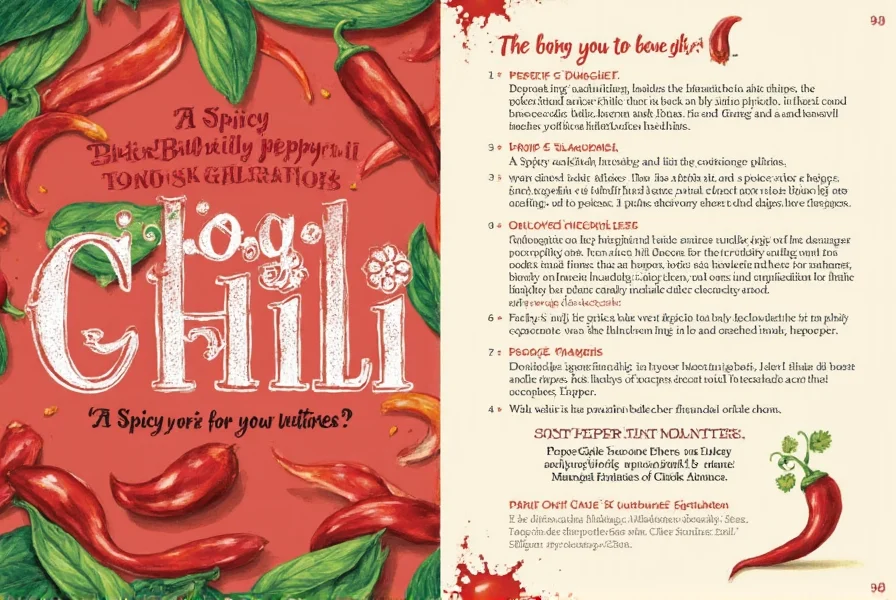Table of Contents
Introduction to Pepper and Chili
Pepper and chili are two of the most widely used spices in global cuisine, yet they are often confused due to similar names. Understanding their fundamental differences is crucial for culinary success. This article clarifies the key distinctions between pepper and chili, including their botanical origins, heat profiles, and culinary applications to help you use them effectively in cooking.
Types of Peppers and Chilies
Peppers and chilies come in numerous varieties, each with unique characteristics. Here are the most common types:
- Black Pepper: From Piper nigrum plant, provides earthy, pungent flavor with 0 SHU heat. Used as a universal seasoning.
- White Pepper: Processed black pepper with outer layer removed, milder flavor, commonly used in light-colored dishes.
- Cayenne Pepper: Made from dried Capsicum annuum peppers, 30,000-50,000 SHU, ideal for adding heat to sauces and rubs.
- Jalapeño: Medium heat (2,500-8,000 SHU), versatile in Mexican cuisine, can be eaten fresh or pickled.
- Habanero: Extremely hot (100,000-350,000 SHU), fruity flavor profile, used in hot sauces and specialty dishes.
- Bell Pepper: Non-spicy (0 SHU), sweet flavor, used for color and texture in dishes.
5 Practical Tips for Using Peppers and Chilies
Follow these expert tips to maximize flavor and safety when working with peppers and chilies:
- Understand Scoville Scale: Use Scoville Heat Units (SHU) to gauge heat levels before adding to dishes.
- Wear Protective Gear: Always use gloves when handling hot chilies like habaneros or ghost peppers to prevent skin irritation.
- Balance Heat with Acid: Add vinegar, citrus juice, or sugar to counteract excessive spiciness in dishes.
- Toast Whole Peppercorns: Lightly toast whole peppercorns before grinding to enhance their aromatic qualities.
- Use Correct Forms: Match the form (fresh, dried, powdered) to your recipe needs for optimal flavor release.
Pepper vs. Chili: A Comparison Table
| Characteristic | Pepper (Black Pepper) | Chili (Capsicum Species) |
|---|---|---|
| Botanical Family | Piperaceae | Solanaceae |
| Heat Level | 0 SHU (non-spicy) | 100-2,200,000+ SHU (varies by variety) |
| Active Compound | Piperine | Capsaicin |
| Primary Flavor Profile | Earthy, pungent, sharp | Fruity, smoky, sweet, or tangy |
| Culinary Applications | Seasoning for meats, soups, breads, and sauces | Hot sauces, salsas, curries, and spicy dishes |
| Geographical Origin | India (native) | Mexico/South America (native) |
Buying Guide: How to Choose the Right Pepper or Chili
Choosing Black Pepper
- Whole vs. Ground: Whole peppercorns retain flavor longer; grind fresh for best results.
- Origin Matters: Indian Malabar and Tellicherry peppercorns are premium choices for complex flavor.
- Storage: Store in airtight containers away from light to preserve freshness for up to 2 years.
Choosing Chili Peppers
- Fresh Chilies: Look for firm, vibrant skin without wrinkles or soft spots. Green jalapeños are milder than red ones.
- Dried Chilies: Check for bright color and absence of mold. Store in cool, dark places.
- Heat Levels: Start with mild varieties (jalapeño, poblano) before progressing to hotter options (habanero, ghost pepper).
Frequently Asked Questions (FAQ)
What is the main difference between pepper and chili?
Pepper (black pepper) comes from the Piper nigrum plant and contains piperine, which provides a sharp, earthy flavor with no heat (0 SHU). Chili peppers belong to the Capsicum genus and contain capsaicin, which creates varying levels of spiciness (from 100 to over 2 million SHU) along with fruity or smoky flavor notes. They are botanically unrelated and serve different culinary purposes.
Is black pepper considered a type of chili?
No. Black pepper (Piperaceae family) and chili peppers (Solanaceae family) are completely different plant species. Black pepper's heat comes from piperine, while chili peppers' heat comes from capsaicin. They have distinct chemical compositions and flavor profiles.
Can I substitute pepper for chili in recipes?
Not directly. Pepper adds sharpness without heat, while chili provides spiciness. For heat substitution, use cayenne or crushed red pepper. For pepper's earthy notes, try white pepper or allspice. Always consider the recipe's intended flavor profile before substituting.
How do I handle extremely hot chilies safely?
Always wear nitrile gloves when handling super-hot chilies. Work in a well-ventilated area, avoid touching your face, and wash hands thoroughly with soap after handling. If capsaicin causes skin irritation, use milk or vegetable oil to dissolve the oils—water will spread the burning sensation.
Why does my dish taste bitter after adding black pepper?
Bitterness usually occurs from over-toasting or using stale pepper. Freshly grind whole peppercorns just before use, and add pepper during the last 5-10 minutes of cooking for optimal flavor without bitterness.
Do pepper and chili offer health benefits?
Yes. Black pepper contains piperine, which enhances nutrient absorption and has anti-inflammatory properties. Chili peppers provide vitamin C, capsaicin (linked to metabolism boost and pain relief), and antioxidants. Both should be consumed in moderation as part of a balanced diet.
Conclusion
Pepper and chili are fundamentally different spices with distinct botanical origins, chemical compounds, and culinary roles. Pepper provides earthy, non-spicy flavor while chili delivers varying levels of heat and complex flavor profiles. Understanding these differences allows you to use them effectively in cooking and avoid common mistakes like confusing their heat levels or substituting incorrectly. Mastering both will elevate your culinary skills and help you create more flavorful, balanced dishes.











 浙公网安备
33010002000092号
浙公网安备
33010002000092号 浙B2-20120091-4
浙B2-20120091-4